CITIZEN PARTICIPATION AND INFORMATION MANAGEMENT
LEARN HERE FROM UNESCO's PAST
PLEASE DON'T TRY TO REINVENT THE WHEEL
JUST COPY PASTE UNESCO'S ACTIVITIES
1) Informing Citizens:
Fighting Corruption Using the Internet in Kenya
The Information Technology Standards Association (ITSA) of Kenya has launched a pilot project whose aim is to increase public awareness and encourage public participation in fighting corrupt practices. The pilot project will offer a corruption online reporting facility in six towns, two remote locations. The media will form the source points of information which will be routed to the Electronic Graft Management (EGM) Centre. The EGM Centre will filter this information electronically and forward it to the relevant authorities for action.
The complete case study can be consulted at The Center for Digital Discourse and Culture (CDDC)
Government Procurement System in Mexico
Mexico’s federal government established "Compranet" for government procurement as part of its efforts to fight corruption by automating procurement procedures. By facilitating a process of bidding and reverse bidding on-line, it seeks to make government purchasing more efficient and transparent. The system allows the public to see what services and products the government is spending its resources on, and what companies are providing them with these services. There are more than 6000 public sector tenders logged daily, and more than 20,000 service-providing firms are regular users.
Go to Compranet
2) Improved Service Delivery:
E-seva center in Andhra Pradesh State of India
The goal of e-seva is to simplify the delivery of city services by providing a wide spectrum of citizen-friendly services that will save citizens the bother of running around to various departments. Services provided include payment of utility bills; reservations of train tickets; getting birth and death certificates, vehicle permits and driving licenses; transport department services, etc. Before the launch of the e-seva project, these services were only available at separate offices and were normally time-consuming because of slow processing speeds and large crowds.
The complete case study, as well as other ICT stories, can be consulted at The International Institute for Communication and Development – Knowledge sharing (IICD)
Member Organized Resource Exchange (M.O.R.E.) in St. Louis, Missouri
M.O.R.E. is a computer network project in an inner city neighborhood of St. Louis. The program was established in 1983, and its goal was to use computer networks to help people learn to pull themselves out of poverty. The service delivery programs included : Grace Hill Neighborhood College, which is a a neighborhood-based system of education to help prepare community members for employment, and Business and Career Center – an employment database to help low-income persons overcome the information barrier that prevents them from finding jobs. The Center is a successful example of the use of ICTs to increase the access to local institutions by members of marginalized communities.
More information
3) Increasing Citizen Participation:
Iperbole Internet civic network in Bologna, Italy
This represents an interconnected gathering point of collective knowledge focusing on "two-way" communication and citizen participation in the information exchange process. Local citizens benefit from a network of internet public places, free internet access points, e-mail and newsgroups. There is direct and remote internet training for beginners; online healthcare support; online services for senior, disabled people and young people; and a "time bank" through which local people can exchange services. There is an online discussion forum, publications of local documents (with abstracts and glossaries) and customer satisfaction surveys.
Go to Iperbole
Democracy Project in North Jutland, Denmark
The task of the Democracy Project was to create an electronic forum for e-democratic dialogue among citizens and politicians, with a particular aim towards the November 20, 2001 County Council Election Day (which later turned out to also be a General Election Day). In 1997, North Jutland had the lowest voter turnout in the Danish elections. The object of the Democracy Project was to publicize decisions made on a regional political level and to involve the citizens in the democratic process. Specifically, the County Council also wanted to reach newly-eligible voters, who were known to show a low turnout. Citizens, politicians and first-time voters were invited to take part in the project. The result was a very lively and well-visited web site with a good dialogue among citizens and politicians.
More information
Fighting Corruption Using the Internet in Kenya
The Information Technology Standards Association (ITSA) of Kenya has launched a pilot project whose aim is to increase public awareness and encourage public participation in fighting corrupt practices. The pilot project will offer a corruption online reporting facility in six towns, two remote locations. The media will form the source points of information which will be routed to the Electronic Graft Management (EGM) Centre. The EGM Centre will filter this information electronically and forward it to the relevant authorities for action.
The complete case study can be consulted at The Center for Digital Discourse and Culture (CDDC)
Government Procurement System in Mexico
Mexico’s federal government established "Compranet" for government procurement as part of its efforts to fight corruption by automating procurement procedures. By facilitating a process of bidding and reverse bidding on-line, it seeks to make government purchasing more efficient and transparent. The system allows the public to see what services and products the government is spending its resources on, and what companies are providing them with these services. There are more than 6000 public sector tenders logged daily, and more than 20,000 service-providing firms are regular users.
Go to Compranet
2) Improved Service Delivery:
E-seva center in Andhra Pradesh State of India
The goal of e-seva is to simplify the delivery of city services by providing a wide spectrum of citizen-friendly services that will save citizens the bother of running around to various departments. Services provided include payment of utility bills; reservations of train tickets; getting birth and death certificates, vehicle permits and driving licenses; transport department services, etc. Before the launch of the e-seva project, these services were only available at separate offices and were normally time-consuming because of slow processing speeds and large crowds.
The complete case study, as well as other ICT stories, can be consulted at The International Institute for Communication and Development – Knowledge sharing (IICD)
Member Organized Resource Exchange (M.O.R.E.) in St. Louis, Missouri
M.O.R.E. is a computer network project in an inner city neighborhood of St. Louis. The program was established in 1983, and its goal was to use computer networks to help people learn to pull themselves out of poverty. The service delivery programs included : Grace Hill Neighborhood College, which is a a neighborhood-based system of education to help prepare community members for employment, and Business and Career Center – an employment database to help low-income persons overcome the information barrier that prevents them from finding jobs. The Center is a successful example of the use of ICTs to increase the access to local institutions by members of marginalized communities.
More information
3) Increasing Citizen Participation:
Iperbole Internet civic network in Bologna, Italy
This represents an interconnected gathering point of collective knowledge focusing on "two-way" communication and citizen participation in the information exchange process. Local citizens benefit from a network of internet public places, free internet access points, e-mail and newsgroups. There is direct and remote internet training for beginners; online healthcare support; online services for senior, disabled people and young people; and a "time bank" through which local people can exchange services. There is an online discussion forum, publications of local documents (with abstracts and glossaries) and customer satisfaction surveys.
Go to Iperbole
Democracy Project in North Jutland, Denmark
The task of the Democracy Project was to create an electronic forum for e-democratic dialogue among citizens and politicians, with a particular aim towards the November 20, 2001 County Council Election Day (which later turned out to also be a General Election Day). In 1997, North Jutland had the lowest voter turnout in the Danish elections. The object of the Democracy Project was to publicize decisions made on a regional political level and to involve the citizens in the democratic process. Specifically, the County Council also wanted to reach newly-eligible voters, who were known to show a low turnout. Citizens, politicians and first-time voters were invited to take part in the project. The result was a very lively and well-visited web site with a good dialogue among citizens and politicians.
More information












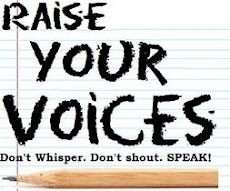



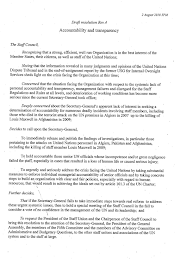

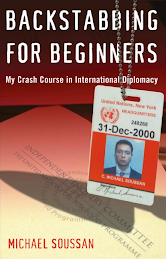
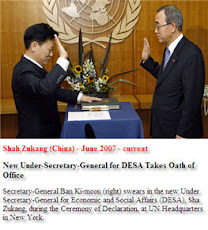
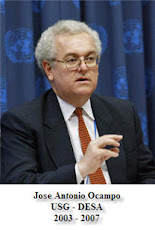
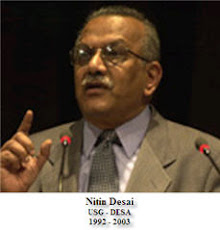
No comments:
Post a Comment